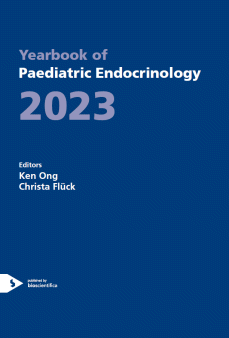8. Type 1 Diabetes
Important for Clinical Practice
ey0020.8-3 | Important for Clinical Practice | ESPEYB20
8.3. What does the licensing of teplizumab mean for diabetes care?
LM Quinn , R Swaby , D Tatovic , P Narendran , REJ Besser , CM Dayan
ey0020.8-4 | Important for Clinical Practice | ESPEYB20
8.4. Two-age islet-autoantibody screening for childhood type 1 diabetes: a prospective cohort study
M Ghalwash , JL Dunne , M Lundgren , M Rewers , AG Ziegler , V Anand , J Toppari , R Veijola , W Hagopian , Type 1 Diabetes Intelligence Study Group
ey0020.8-5 | Important for Clinical Practice | ESPEYB20
8.5. Impact of the COVID-19 pandemic on long-term trends in the prevalence of diabetic ketoacidosis at diagnosis of paediatric type 1 diabetes: an international multicentre study based on data from 13 national diabetes registries
NH Birkebaek , C Kamrath , JM Grimsmann , K Aakesson , V Cherubini , K Dovc , C de Beaufort , GT Alonso , JW Gregory , M White , T Skrivarhaug , Z Sumnik , C Jefferies , T Hortenhuber , A Haynes , M De Bock , J Svensson , JT Warner , O Gani , R Gesuita , R Schiaffini , R Hanas , A Rewers , AJ Eckert , RW Holl , O Cinek
ey0020.8-6 | Important for Clinical Practice | ESPEYB20
8.6. Continuous glucose monitoring versus blood glucose monitoring for risk of severe hypoglycaemia and diabetic ketoacidosis in children, adolescents, and young adults with type 1 diabetes: a population-based study
B Karges , SR Tittel , A Bey , C Freiberg , C Klinkert , O Kordonouri , S Thiele-Schmitz , C Schroder , C Steigleder-Schweiger , RW Holl
ey0020.8-7 | Important for Clinical Practice | ESPEYB20
8.7. Diabetes stigma and clinical outcomes in adolescents and young adults: The SEARCH for diabetes in youth study
KB Eitel , AJ Roberts , R D'Agostino , CE Barrett , RA Bell , A Bellatorre , A Cristello , D Dabelea , LM Dolan , ET Jensen , AD Liese , EJ Mayer-Davis , K Reynolds , SM Marcovina , C Pihoker




